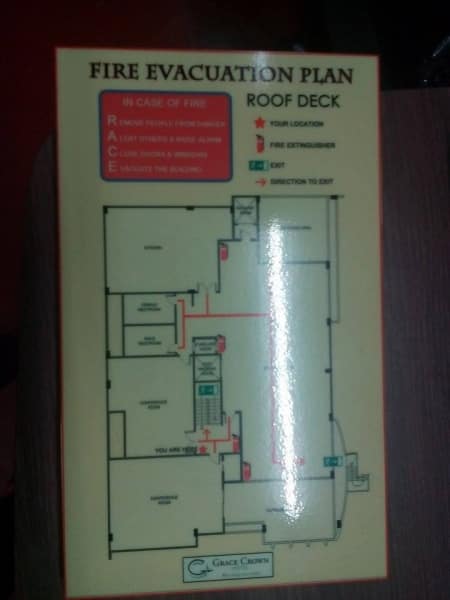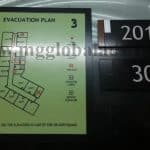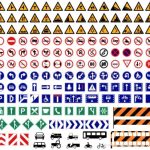EVACUATION MAP, SAFETY SIGNAGE, PHOTOLUMINESCENT SIGNS
In emergency and other critical situations such as fires and earthquakes, or a slippery road on a rainy night, one thing that would absolutely make all the difference between life and death is appropriate signage. An evacuation map would lead people to the correct exit routes of a certain floor of a building and to a proper assembly space. A falling debris safety signage along a construction site would keep walkers by accident and injury free by alerting them not to walk in that area. In poorly lit roads, photoluminescent signs pop out when your headlights strike them to warn you of, perhaps, a speed limit. Collectively, these signage exist for the very purpose of keeping safety in places where they stand by informing the public on the nature of their surroundings or by instructing them on the apt thing to do in certain situations.
These signs, the evacuation maps, safety signage, photoluminescent signs, are not just signs put up out of want nor convenience. These signs are mandated by law. In the Philippines, under the Labor Code of the Department of Labor and Employment, the Occupational Safety and Health Standards requires building premises to have adequate safety signs and instructions which follow specific standards. Failure to comply to this would result in legal sanctions that include fines or even termination of operations of the company or institution. However, it is important to note that the intent of putting up appropriate signs is not to avoid the penalty for non-compliance but to keep the safety and welfare of the general public.
Evacuation Map

An evacuation map or an evacuation floor plan is an indispensable evacuation element which is part of the emergency action plan that is required of workplaces and other establishments. It is composed of the architectural layout which shows walls and doors, important elements such as exit points and extinguisher locations, and the starting point of the viewer.
A good and effective map must be very simple and clear; the objective of an evacuation map is to bring people to safety where time is of the utmost essence. It must be very comprehensible at a glance, devoid of any complex symbolism and confusing color schemes, which can be grasped even by a stressed or overwhelmed evacuee. To achieve this, solid black lines, symbols and color codes that are universally understood, and concise instruction must be utilized. If it comes with instructions in text form, these must be legible.
However, the effectiveness of an evacuation map is not dependent solely on its composition and appearance. Strategic positioning that makes it easily accessible during emergencies is equally important as its contents. If put in a good location where foot traffic is high, the public would be familiarized with it and would not find difficulty to access it when needed.
Safety Signage

Safety signs are chiefly a component of health and safety management and a legal requirement in all workplaces. They give information about safety whether referring to objects or scenarios by using different media such as verbal communication, hand signals or signboards. It is important to note that these signs only convey information regarding health and safety and do not serve as substitute for real safety measures. It would not make sense to have a signboard requiring wearing of hard hats if workers would not wear one; the purpose is defeated as a construction injury might occur.
The main objective of safety signage is to attract immediate attention to objects or situations that might cause danger. The alarming red color of a danger sign, for example, would always draw attention from viewers and make them alert of their surroundings. Their very purpose lie in their usage where danger cannot be avoided adequately and hence should be taken note of.
For safety signage to be highly effective in keeping people from hazards, they should strictly follow design principles that are understood regardless of literacy and language ability of a viewer. Moreover, they must be manufactured such that standards are met when it comes to colorimetric, photometric and physical dimensions. Complex and unknown symbols when used for signs would just be useless.
The clear meaning of a signboard is communicated by the combination of color, geometric shapes, symbols and pictogram that it has. These elements must be universally known so that everyone from any nationality and educational background will be able to understand it. It should not contain text because it needs to be understood independent of a person’s literacy. A combination of a triangle, the color yellow and an exclamation point would clearly strike as warning for danger, and this would be understandable to anyone.
The color-coding scheme that safety signs use follow that of traffic lights: red is for prohibition, yellow is for caution, and green is for positive action. Additionally, blue is for mandatory signs that require specific behavior. Geometric shapes also deliver specific messages: discs (circles) are for prohibition and instruction, triangles are for warnings, and squares/ rectangles are for emergencies and informative signs.
The purpose of safety signage are defeated when they are not properly positioned or when they are not visible. What good would it do the public if a sign cannot be seen clearly from meters away, or if the sign has faded its contents? Therefore, they must be rendered visible by sufficient lighting, must be installed at a suitable height to the line of sight, and must be made of durable, shock and weather-resistant materials that are suited to the environment.
Photoluminescent Signs

As mentioned, safety signs are required to be visible thus they have to have a light source if they are placed in locations that receive low light. But how about in the event of power outages? These signs would definitely be rendered useless because they are not visible. How then would individuals find their way out of the dark in order to evacuate? The answer lies in emergency lighting and signage. Emergency exit strategies require that all exits and doors be marked with emergency lighting and signage that will function when electrical power is cut. Not only this but PL signs can also mark assembly points, fire extinguishers, and other important sites and objects.
Photoluminescent signs fall under emergency lighting and signage. PL signs use photoluminescence to power up when there is no electricity. These products are made up organic phosphors or compounds that absorb light from sources such as the sun and artificial light to charge energy into them. What they emit when they light up is the afterglow of this light energy that they absorbed. They become instantly visible in darkness or in low-light levels such as in blackouts and power outages, making them stand out and glow in the dark.
When fires or earthquakes occur which may cause loss of electricity, photoluminescent signs would provide light and direct people to proper exits. The darkness is such a huge factor in increasing the stress and panic among people in these critical situations which can make them behave in ways that can be more detrimental in their lives. With the presence of PL signs, confusion and lack of orientation would be greatly diminished if not cast out completely.
The safety of usage of photoluminescent signs is approved internationally by codes such as the International Building Code and the International Fire Code. In addition to being globally-approved, PL signs carry a lot of advantages over other forms of emergency lighting. They require no power to function, they only need a light source to shine on them for them to be charged. As a result, they have very low to zero maintenance – they do not need electricity and they have no moving parts that need replacing. When fully charged, their light can last as long as 16 to 96 hours (depending on the brand). Lastly, they do not give out harmful radiation because the afterglow they emit falls within the visible light range only.
These different forms of signages all have a common denominator: the intent of keeping safety and health of people by informing them of the nature of their surroundings. May it be for emergency situations or for potential dangers in workplaces, all of these are very important to be put up. By utilizing these signages properly, many lives can be saved, accidents be prevented in the face of emergency situations or physically dangerous scenarios.
References:
http://blog.building-maps.com/2011/02/14/how-to-createdraw-an-emergency-fire-evacuation-map-for-your-business-or-building/
https://www.osha.gov/SLTC/etools/evacuation/evac.html
https://www.osha.gov/SLTC/etools/evacuation/floorplan_demo.html
Array
http://www.firesure.ie/fire_safety_guidance/system_of_safety_signs_at_workplaces.html
http://www.hsa.ie/eng/Topics/Signage/Safety_Signs/
Array
http://www.exitlightco.com/Photoluminescent-Egress-Sign-FAQs.html
http://www.dh-inc.com/photoluminescent-faq




























